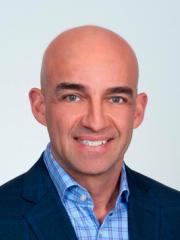#20. Principles of Oxygen Exchange
Welcome to the first podcast of the podcast series on End-tidal oximetry. In this first podcast, Dr. Robert Bilkovski will focus on delivering a high-level understanding of oxygen transport basics and the concept of oxygen exchange within the alveolar unit. Future podcasts will dive into more detail including the concept of the oxygen gradient, end-tidal CO2 and O2 measurement and how end-tidal oximetry may be used clinically.
Show Notes
Transcript
Speakers
Welcome to the first podcast of the podcast series on End-tidal oximetry. In this first podcast, Dr. Robert Bilkovski will focus on delivering a high-level understanding of oxygen transport basics and the concept of oxygen exchange within the alveolar unit.
Future podcasts will dive into more detail including the concept of the oxygen gradient, end-tidal CO2 and O2 measurement and how end-tidal oximetry may be used clinically.
Hi, I am Dr. Robert Bilkovski. Welcome to this podcast series on end-tidal oximetry. In this podcast titled - Principles of Oxygen Exchange, which is the first in the series on the concept of end-tidal oximetry, we will focus on gaining a high-level understanding of oxygen transport basics and the concept of oxygen exchange within the alveolar unit. Future podcasts will dive into more detail including the concept of the oxygen gradient, end-tidal CO2 and O2 measurement and how end-tidal oximetry may be used clinically.
Before we review the application of respiratory gas measurement, we should first start with an overview of the basics of oxygenation and oxygen transport. Oxygenation involves a series of steps that include inhalation, gas exchange, oxygen transport, oxygen delivery, oxygen extraction and exhalation. Oxygen is central to the proper functioning of the human body, which functions optimally under aerobic conditions. The reason is that the conversion of glucose, the dominant fuel for cells, requires a high amount of oxygen to produce ATP, which is essential for cellular function. As a byproduct of cellular metabolism, carbon dioxide is produced, which is transported from the tissue via the circulatory system back through the lungs is removed during gas exchange within the alveoli and exhalation.
Changes to lung ventilation that become clinically significant are commonly identified through measurement of respiratory gasses during exhalation or end-tidal measurements. For instance, under respiratory distress, where ventilation is rapid and deep, the amount of CO2 being cleared during exhalation increases, and this is reflected as a low end-tidal CO2 that corresponds with a low arterial CO2 content. In contrast, when respiratory failure is imminent and ventilation is decreasing in depth and frequency, the amount of CO2 being cleared falls and as a result the end-tidal CO2 value will increase for the amount of CO2 within the blood stream is accumulating.
Taking a closer look at gas exchange in the lungs, the simplest approach is to focus on a single alveolar unit that is part of innumerable alveolar units within the lungs. As oxygen enters an alveolar unit during inhalation, mixed venous blood enters through capillaries that originate from the pulmonary artery. As the capillary blood traverses the alveolar unit, gas exchange occurs so that equilibration of oxygen and carbon dioxide occurs at the end-capillary portion of the alveolar unit. This gas exchange occurs as a result of diffusion gradients. A diffusion gradient exists when the partial pressure of a gas, for instance oxygen, is different when separated by a permeable membrane, in this case at the alveolar. What results is equilibration via diffusion between the high and low concentrated compartments.
Under normal gas exchange, the partial pressure of oxygen in the alveolus is greater than that in mixed venous circulation. For CO2, the opposite exists, where the partial pressure of CO2 is greater in the mixed venous circulation. The presence of diffusion gradients for O2 and CO2 will result in equilibration as blood traverses through the alveolar unit. The diffusion properties of CO2 are greater than those of oxygen and as a result, the equilibration between the mixed venous capillary and alveolar compartments occurs sooner during transit of blood though the alveolar unit. To illustrate this difference in diffusion capability – when the partial pressure gradient of CO2 is 5 mm Hg, an equal amount of CO2 is exchanged compared to an oxygen partial pressure gradient that is 12 times greater at 60 mm Hg.[1] Therefore, within each alveolar unit, CO2 equilibrates more quickly than O2. This is an important factor in understanding how changes in ventilation or perfusion can impact arterial or end-tidal gases.
As a result, abnormalities in cardiopulmonary function can impact gas exchange and result in changes to the partial pressure of oxygen and carbon dioxide and can be observed via end-tidal measurements of these two gases in real-time.
This concludes the first podcast in the series of end-tidal oxygen monitoring with the next module focusing on the greater details around the concept of the “oxygen gradient.” Thank you for listening.
References
[1] Johan Petersson and Robb W. Glenny, “Gas Exchange and Ventilation-Perfusion Relationships in the Lung,” The European Respiratory Journal 44, no. 4 (October 2014): 1023–41, https://doi.org/10.1183/09031936.00037014.

Dr. Robert N. Bilkovski, MD, MBA
President, RNB Ventures Consulting Inc.
Dr. Bilkovski has broad management experience, having served in leadership roles in multiple Fortune 500 companies overseeing medical affairs and clinical development in IVD, medical device, and pharmaceuticals industries. Some of the companies where he served in leadership roles include Hospira, GE HealthCare, Abbott Laboratories, and Becton Dickinson. Robert currently is the President of RNB Ventures Consulting Inc. providing strategic consulting in the field of medical and clinical affairs for medical device and diagnostic companies.
Dr. Bilkovski received his undergraduate degree in biochemistry with a focus in genetic engineering at McMaster University in Hamilton, Ontario, Canada. Robert completed his medical training at Rosalind Franklin University/The Chicago Medical School and subsequently pursued specialization in emergency medicine. Lastly, Dr. Bilkovski earned his MBA at the University of Notre Dame as part of his transition from clinical medicine to medical industry.













